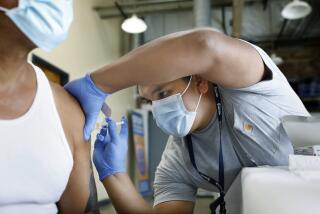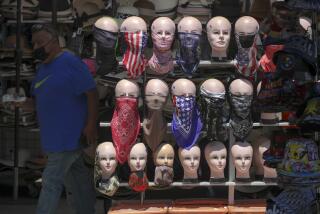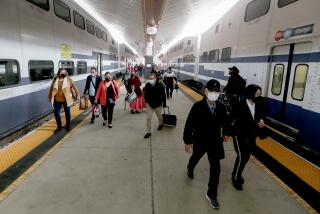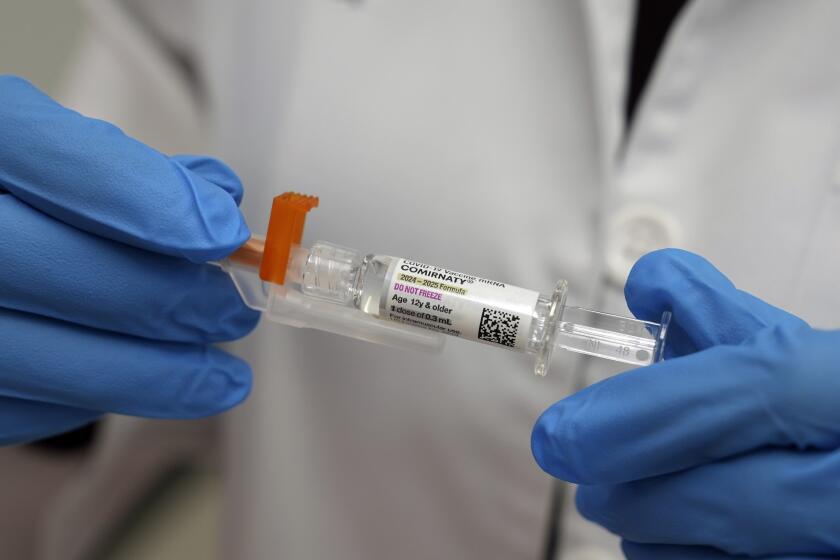One San Diego ZIP Code averages 30 new coronavirus cases daily

- Share via
SAN DIEGO — As coronavirus cases surge across San Diego County, one ZIP Code in south San Diego has seen an average of 30 new cases a day since since Oct. 22, more than any other ZIP Code in the county.
The 92154 ZIP Code encompasses the neighborhoods of Otay Mesa, Nestor, Egger Highlands and Tijuana River Valley.
This area has the highest number of total cases, nearly 4,000, since San Diego County health officials began releasing coronavirus data by ZIP Code in early March. In the last month alone, the area has added nearly 1,000 new cases.
Other areas in south San Diego, Chula Vista and El Cajon also have averaged at least 20 new coronavirus cases a day since mid-October, data show.
“It’s not surprising, given everything we know,” said Nancy Maldonado, chief executive of the Chicano Federation, a social services and advocacy organization serving residents in south San Diego neighborhoods.
What she knows is there are long-standing disparities in healthcare in these neighborhoods, as well as an overrepresentation in low-wage “essential” jobs, a higher population density and a lack of access to affordable housing, she said.
“The housing situation is not something we can work around overnight,” she said. “If you have multiple families in one place, it’s not surprising that those ZIP Codes have stayed at the top.”
In the 91911 ZIP Code, which encompasses southern Chula Vista, nearly 800 new cases have been reported since mid-October, for an average of 25 new cases a day, putting it at No. 2 in the county.
It’s followed by two ZIP Codes in El Cajon — 92020 and 92021 — which each averaged increases of about 20 cases per day.
The average daily increase of cases in these ZIP Codes exceeds most other county areas.
Of some 180 ZIP Codes in San Diego County, 92% have an average daily increase of fewer than 10 cases.
Data show south San Diego and southern Chula Vista are the only areas with a daily rate of 25 new cases or higher.
Some neighborhood residents say the risk of COVID-19 seems ever-present.
Carlos Sanchez, who has lived in Nestor for nearly 47 years, lost a sister to COVID-19 in June. Recently a neighbor couple were taken to the hospital, he said, because of complications from COVID-19.
“It shocked us in a way because it’s so close to us,” he said.
Sanchez’s wife, a grocery store cashier, has not seen her grandchildren since March because the family wants to be safe. He constantly reminds his wife to be safe at work, because she comes in contact with dozens of customers a day.
He stays home most days to avoid getting sick.
Communities with high percentages of essential workers tend to see higher case rates, said Michael Workman, county communications director.
He added that skilled nursing facilities, congregate living and prisons also could be factors in high infection rates in certain ZIP Codes.
For instance, dozens of coronavirus cases at the Otay Mesa Detention Center could be contributing to the rates in the 92154 ZIP Code in southern San Diego and Otay Mesa. Employees and detainees have tested positive at the facility, officials have said.
Workman said community habits — such as levels of mask wearing, physical distancing and social gatherings — also could play a role in high numbers in some ZIP Codes.
Some nonprofit organizations have spent the last eight months pushing for more coronavirus testing in southern San Diego County neighborhoods and providing resources to communities most affected by the pandemic.
San Ysidro Health, which operates clinics across San Diego County, offers free testing at a clinic in National City and a free consultation with a doctor — regardless of the test results — to help educate community members.
“We are experiencing a surge in the county right now, so we are seeing increases in the number of people who are coming in and the number of cases that we are seeing,” said Adriana Bearse, program manager in research and health promotion with San Ysidro Health.
Both San Ysidro Health and the Chicano Federation serve refugee and immigrant populations in El Cajon. Advocates say they have struggled to reach some of them because of cultural barriers.
The Chicano Federation is considering adopting in-person outreach in areas with high coronavirus rates — with extra safety precautions — to provide information and resources to those areas, Maldonado said.
“It’s been very difficult to reach some of those communities with education,” she said. “We try radio and social media, but there are still people who we are not reaching … probably those who need it most.”
Schroeder and Lopez-Villafana write for the San Diego Union-Tribune.
More to Read
Sign up for Essential California
The most important California stories and recommendations in your inbox every morning.
You may occasionally receive promotional content from the Los Angeles Times.













